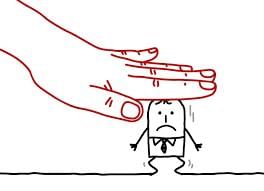Class 8 Exam > Class 8 Notes > Year 8 Physics (Cambridge) > Forces
Forces | Year 8 Physics (Cambridge) - Class 8 PDF Download
Forces
Balanced and Unbalanced Forces
- Definition: Forces are balanced when the resultant force acting on an object is zero. This means that there is no overall change in the object's state of motion.
- Examples: A stationary object or an object moving at a constant speed without changing direction.
- Unbalanced Forces: Result in a change in motion—either starting, stopping, or changing speed or direction.
- Example: Pushing a car to make it move or applying brakes to stop it.

Turning Effect of a Force
- Definition: Also known as torque, it is the rotational effect of a force.
- Example: Turning a wrench to tighten a bolt—force applied at a distance from the pivot point creates torque.
- Principle: Larger force or longer lever arm increases the turning effect.
Pressure
Pressure on an Area
- Definition: Pressure is the force applied perpendicular to the surface of an object per unit area.
- Formula:

- Example: Sitting on a chair—more pressure on a smaller area can be uncomfortable compared to spreading the weight over a larger area.

Pressure and Diffusion in Gases
- Diffusion: The movement of particles from an area of high concentration to an area of low concentration.
- Pressure's Role: Higher pressure can increase the rate of diffusion by forcing particles closer together, speeding up collisions and movement.
- Example: Inflating a balloon—increasing pressure inside forces air out when released, equalizing pressure with surroundings.
Question for ForcesTry yourself: What does an unbalanced force result in?View Solution
The document Forces | Year 8 Physics (Cambridge) - Class 8 is a part of the Class 8 Course Year 8 Physics (Cambridge).
All you need of Class 8 at this link: Class 8
|
8 videos|39 docs|11 tests
|
FAQs on Forces - Year 8 Physics (Cambridge) - Class 8
| 1. What is pressure? |  |
Ans. Pressure is the force applied perpendicular to the surface of an object per unit area.
| 2. How is pressure calculated? |  |
Ans. Pressure is calculated by dividing the force applied on an object by the area over which the force is applied.
| 3. What are the units of pressure? |  |
Ans. The SI unit of pressure is the pascal (Pa), which is equal to one newton per square meter (N/m^2).
| 4. How does pressure affect an object's behavior? |  |
Ans. Pressure can compress or deform an object, depending on the material's properties and the amount of force applied.
| 5. Can pressure be both positive and negative? |  |
Ans. Yes, pressure can be both positive (compressive) and negative (tensile), depending on the direction of the force applied relative to the object's surface.
Related Searches





















